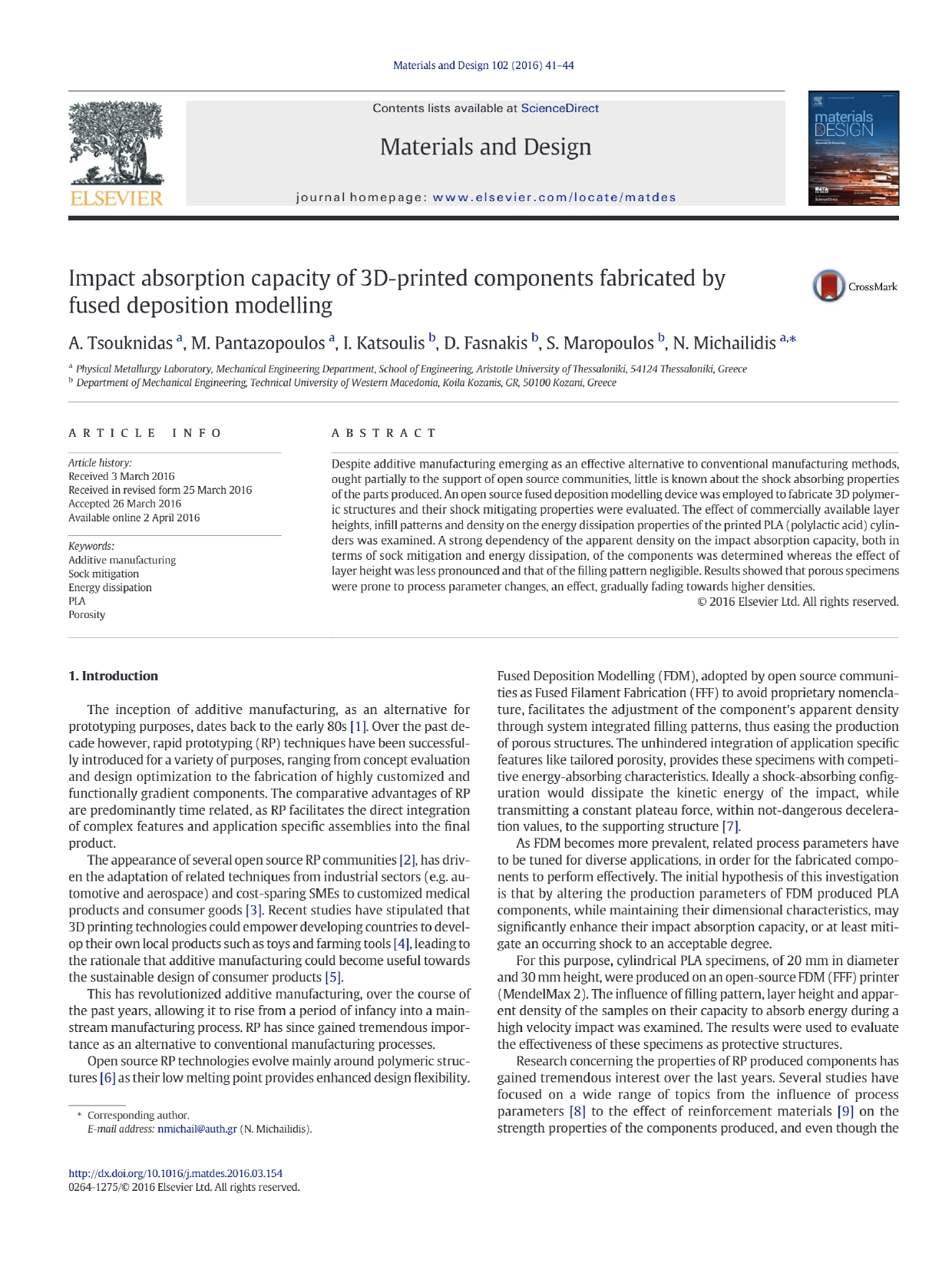Τitle
Impact absorption capacity of 3D-printed components fabricated by fused deposition modelling
Impact absorption capacity of 3D-printed components fabricated by fused deposition modelling
Materials and Design, 102, pp. 41-44.
Despite additive manufacturing emerging as an effective alternative to conventional manufacturing methods, ought partially to the support of open source communities, little is known about the shock absorbing properties of the parts produced. An open source fused deposition modelling device was employed to fabricate 3D polymeric structures and their shock mitigating properties were evaluated. The effect of commercially available layer heights, infill patterns and density on the energy dissipation properties of the printed PLA (polylactic acid) cylinders was examined. A strong dependency of the apparent density on the impact absorption capacity, both in terms of sock mitigation and energy dissipation, of the components was determined whereas the effect of layer height was less pronounced and that of the filling pattern negligible. Results showed that porous specimens were prone to process parameter changes, an effect, gradually fading towards higher densities.
